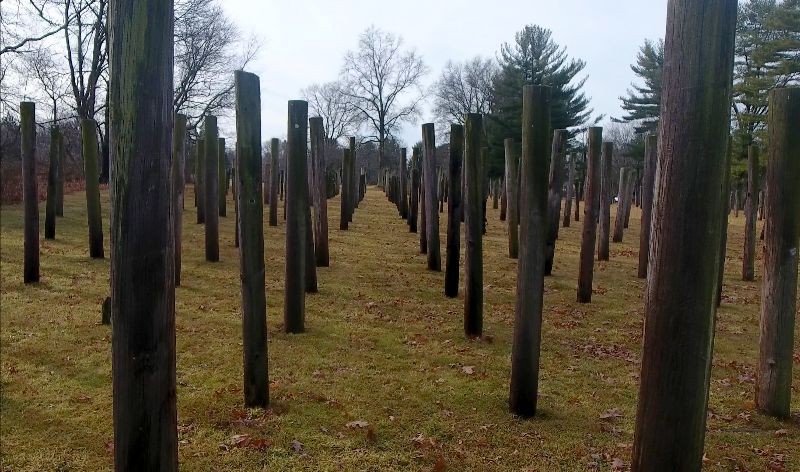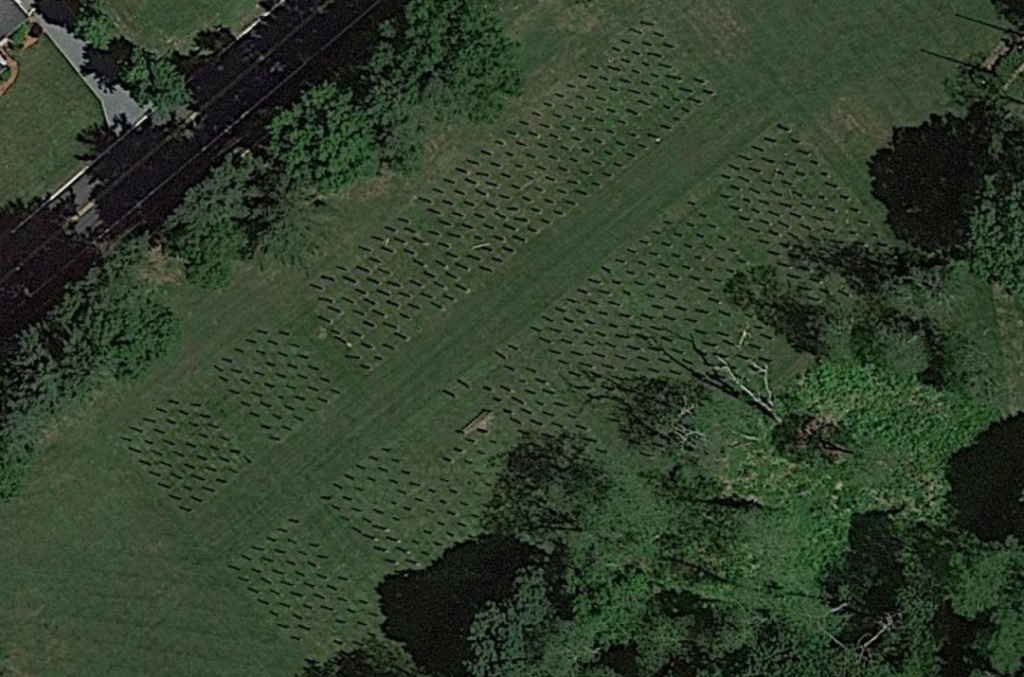A Tree* Grows* in Brooklyn*
Chester Township, New Jersey, is a municipality in the northern part of the state, home to about 7,500 people. It’s about an hour and a half’s drive west of Brooklyn, New York (here’s a map), but unlike Brooklyn, it is hardly an urban area — as the township’s Wikipedia entry states, it “has large amounts of land that is either not developed or used for farming, with many Victorian style homes and large lots.” Or, in other words, a lot of trees grow there.
And so do these (via NJ.com):

Those aren’t trees — at least, not anymore. And they aren’t growing; quite the opposite. What you see above are rows and rows of telephone poles — or, rather, potential telephone poles. Welcome to what is colloquially known as the Telephone Pole Farm.
Telephone poles and, for that matter, utility poles, don’t do a lot. Their role in our infrastructure is to stand there, holding up the wires that carry our conversations from person to person. When they do that job, we generally take them for granted, but when we fail, core parts of our daily lives come to a halt. And that’s not just a headache for use at home — it’s also a headache for telephone companies.
In 1928, Bell Telephone Laboratories — a precursor to AT&T — needed to better understand how telephone poles work, or more accurately, how they fail. Telephone poles are just logs from old trees, and like anything else, they’re decaying. Bell didn’t know which types of wood would decay the slowest, how to treat trees to minimize decay, etc. So the company decided to plant some dead trees and find out. The company acquired 100 acres of farmland — selected, per the Chester Historical Society (pdf), because the area “provides many types of topography and harsh weather such as blazing sunshine, high winds, driving rain, sleet, and icing” — to learn how each of the wood choices would stand up in various conditions. The poles are placed two feet into the ground and, as seen in the Google Maps satellite view below (via here), are evenly spaced, bespeckling the landscape.

Each tree was also tagged with a metal plate adorned with a unique identifying number, as seen here. According to the Chester Historical Society, engineers “revisited [the trees] annually to record their condition and note damage,” and at times, “cores were taken or entire poles [were] removed to determine the condition of the interior of the posts.” That information was shared with crews to maintain its infrastructure for decades.
Today, the telephone pole farm still exists — but it isn’t used by Bell or AT&T. The data the company gathered over the decades was enough to help them determine strong practices for telephone pole selection, and the need for the farm diminished. The township bought the farm and the surrounding areas in 2004 for $6 million and renamed it Highlands Ridge Park, which is now open to the public.
Bonus fact: The most significant contributor to utility pole degradation isn’t usually the weather — it’s the birds. According to Bird News, “woodpecker damage to wood poles is the most significant cause of pole deterioration in the United States,” with woodpeckers causing millions of dollars of damage each year. And yes, there are woodpeckers in northern New Jersey, so Bell Labs probably accounted for that in their research.
From the Archives: Barbed Bells: How barbed wire fences doubled as telephone poles, kind of.
